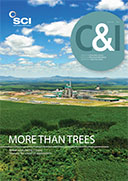Kate Rubins became the 60th woman to fly in space when she launched on a Soyuz spacecraft to the International Space Station on 6 July 2016. She is also the first person to sequence DNA there. Amazingly, ‘on the very first try it worked,’ the Nasa astronaut told the Bio meeting in San Diego in June. Although doing life sciences experiments in an environment not subject to the force of gravity was an experience that required some getting accustomed to, she admitted.
Most equipment had to be stuck down with Ducttape or Velcro to keep it from floating away, Rubins said, while most fluids behave totally differently in microgravity, where ‘simply wringing out a wet washcloth causes the fluid to move up your arm’. The mere action of pipetting a liquid became a major operation to stop it from flying backwards.
The effects on the body are also a topic of major research interest, she noted, particularly in terms of our adaptability for future longer term space missions. Astronauts quickly have to acclimatise to a loss of body fluids, relatively high CO2 exposures and ionising radiation – as well as not having an ‘up’ and ‘down’ to orient to. And there are other discomforts, too, Rubins pointed out. The trick is ‘not to think too much about where the [drinking] water comes from,’ she said – explaining how the spacecraft operates a waste purification system that recycles clean potable water back to the crew.
For longer term missions deeper into space, there needs to be much greater reliability of the hardware, she joked: ‘You don’t want your toilet and waste collection and recycling constantly breaking down if you’re going to Mars.’
Rubins performed two space walks during her time on the ISS, while carrying out general maintenance and repairs, she recalled. ‘My main objective was to stay attached to the space station and keep hold of the [£600,000 piece of] space equipment I was carrying,’ she said.
Coming back down to Earth after 115 days in space was another major test of physical endurance. ‘I felt like I was being centrifuged to the planet. All I could do was a slow shuffle – I hated gravity for a while,’ Rubins said, adding that even now she misses ‘flying’.
A trained molecular biologist, Rubins is now helping to train other astronauts as well as exploring other possible experiments in microgravity. There are discussions currently of an Agency, where people may in future send off experiments to be carried out under microgravity on the space station, she noted.





